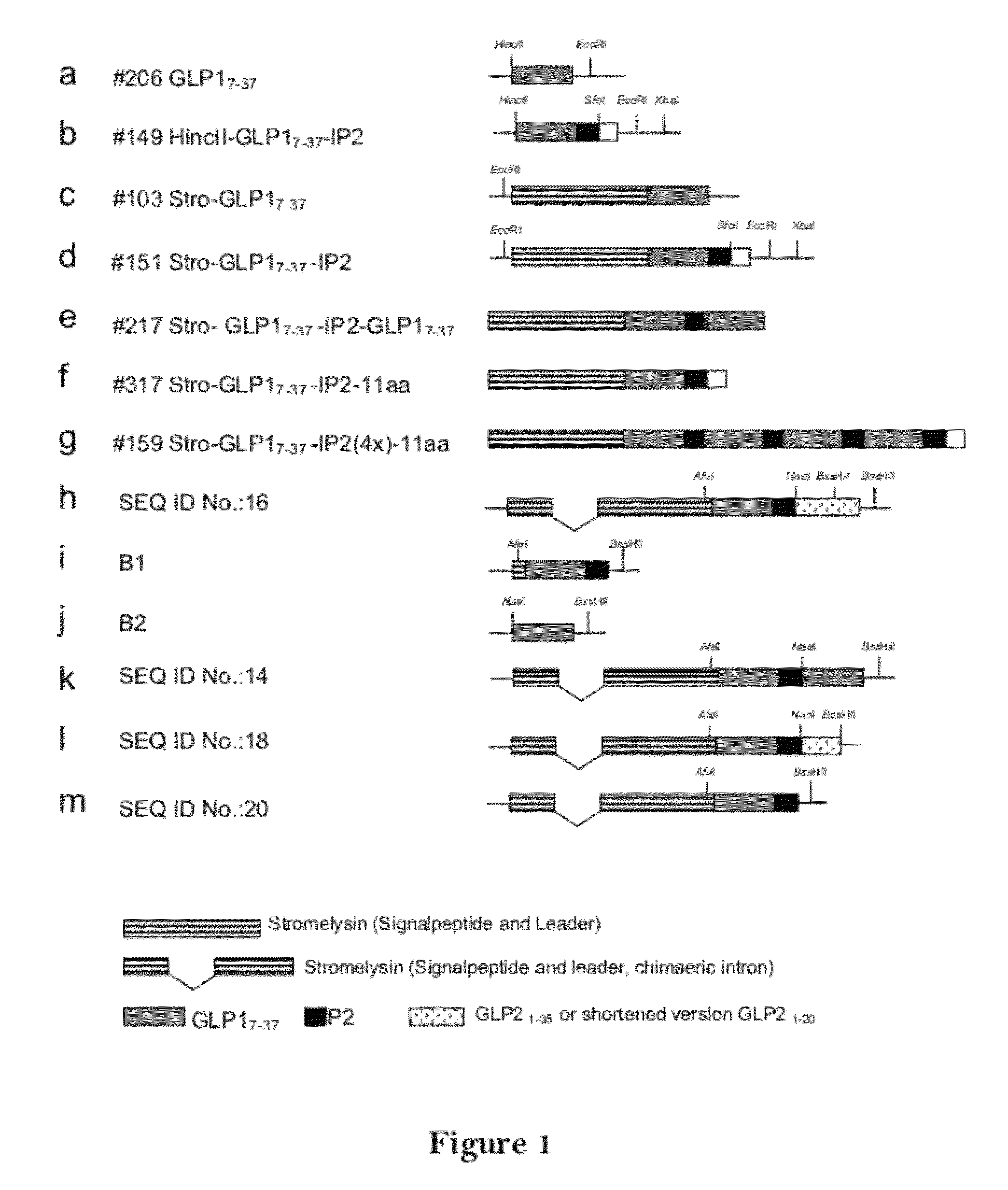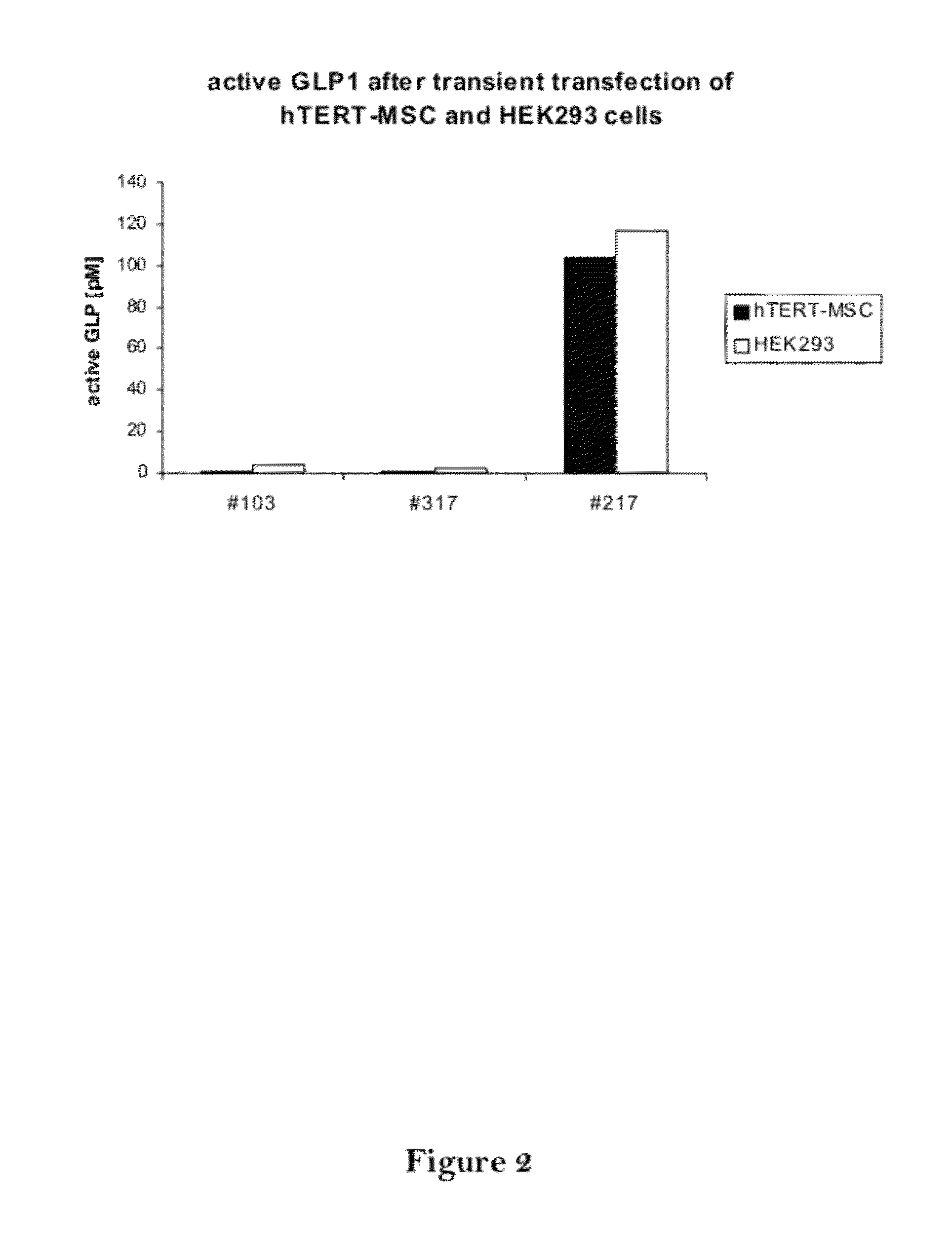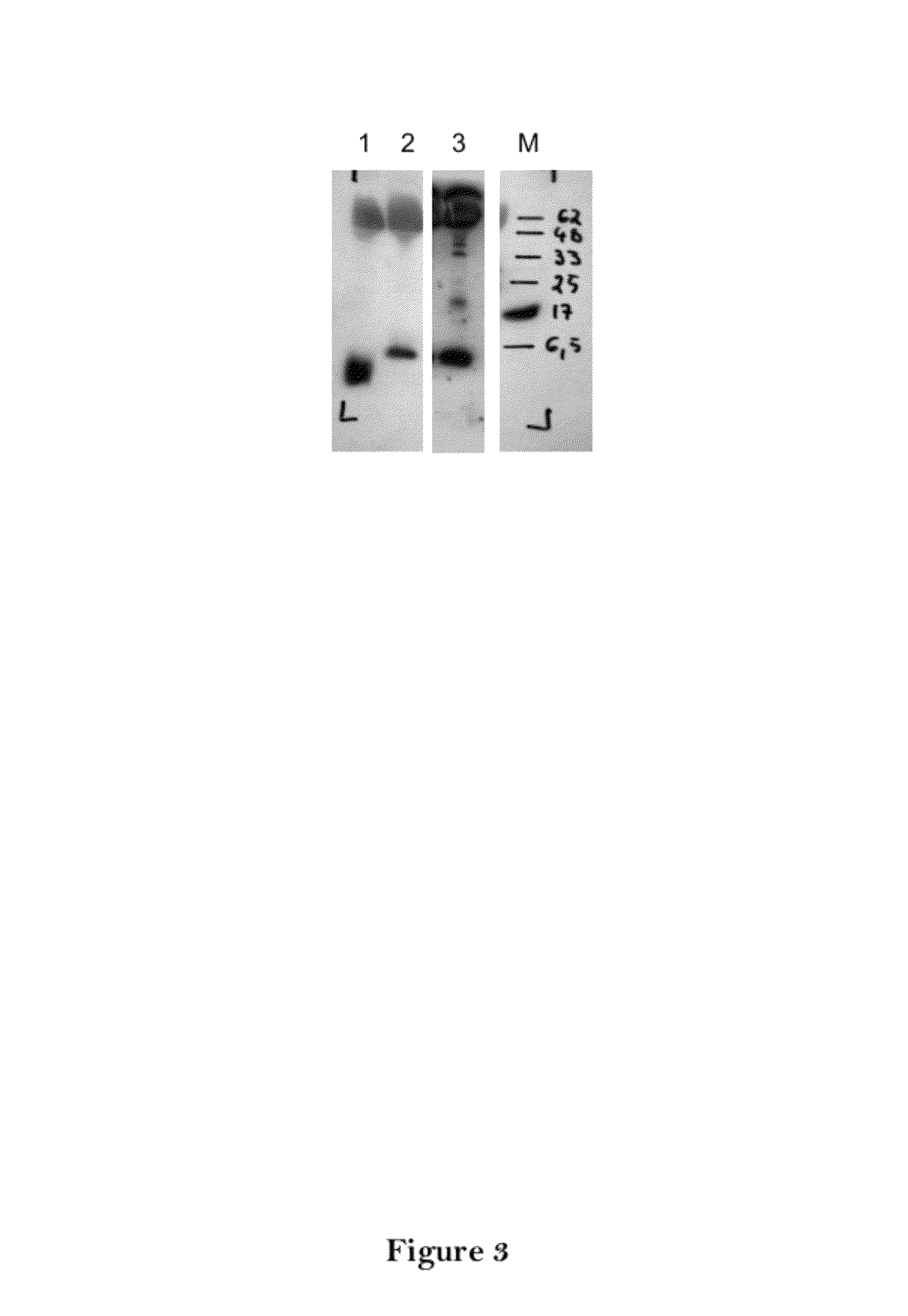GLP-1 Fusion Peptides
a fusion peptide and glp-1 technology, applied in the field of new drugs, can solve the problems of increasing morbidity and mortality, complex problems, severe complications, etc., and achieve the effect of significantly reducing the relative body weight increas
- Summary
- Abstract
- Description
- Claims
- Application Information
AI Technical Summary
Benefits of technology
Problems solved by technology
Method used
Image
Examples
example 1
Creation of Genetic Constructs
[0119]The coding sequence for GLP-1(7-37) cDNA was synthesized synthetically, in a sequence including HincII and EcoRI sites as indicated in FIG. 1a. Separately the cDNA illustrated in FIG. 1b was synthesized, including the coding sequences for GLP-1(7-37), IP2 and restriction sites for SfoI, EcoRI and XbaI, as illustrated in FIG. 1b. To direct GLP-1 to the secretory pathway, the heterologous signal sequence of stromelysin 3 (Acc. No. NM—005940) was used. Therefore the cDNA, encoding stromelysin signal and leader sequence was reverse transcriptase PCR amplified from human RNA, and used with the construct of FIG. 1a or FIG. 1b to form the construct shown in FIG. 1c and FIG. 1d, respectively.
[0120]The HincII / EcoRI fragment of the FIG. 1a construct is cloned into the SfoI site of the sequence of FIG. 1d to form the construct FIG. 1e. Similarly, the EcoRI fragment of FIG. 1d is cloned into the EcoRI site of an eukaryotic expression plasmid, to produce the c...
example 2
Transfection, Clonal Selection and GLP-1 Expression of Mammalian Cells
[0123]Source of the cells: HEK293 (human embryonic kidney cell line, # ACC 305, DSMZ Cell Culture Collection, Germany), AtT20 (Mouse LAF1 pituitary gland tumor cell line, #87021902, European Cell Culture Collection, UK), hTERT-MSC cells are generated by Prof. Kassem, University Hospital of Odense, Denmark.
[0124]For transfection of 106 cells 0, 5-2 μg plasmid DNA with different GLP-1 constructs was used. The constructs were generated as described in Example 1. HEK293 cells were transfected by standard calcium phosphate co-precipitation method as described in Current Protocols in Molecular Biology (Ausubel et al. 1994ff Harvard Medical School Vol2., Unit 9.1). AtT20 cells were transfected using FuGene (Roche) as described in current Protocols in Molecular Biology (Ausubel et. al. 1994ff, Harvard Medical School Vol 2., Unit 9.4). Transfection of hTERT-MSC cells was performed using the Nucleofector technology (Amaxa),...
example 3
Western Blot Analysis of GLP-1 Peptides, Secreted from Mammalian Cells
[0127]Cell culture supernatant from GLP-1 secreting cells was separated in a 10%-20% gradient SDS PAGE (120V, 90 minutes) and transferred to a PVDF membrane (Immobilon-P Membrane 0.45 μm Millipore IPVH 00010) by semi-dry blotting (2.0 mA / cm2, 60 minutes). After methanol fixation and blocking (3% (w:v) BSA, 0.1% (v:v) Tween-20 in TBS) the membrane was immunoblotted with 1 μg / ml anti-GLP-1 antibody (HYB 147-12, Antibodyshop) at 4° C. o / n. After washing and incubation with 0.02 μg / ml detection antibody (Anti Mouse IgG, HRP conjugated, Perkin Elmer PC 2855-1197) at RT for 4 hours, chemiluminescence detection reveals the location of the protein.
[0128]Western Blot Analysis is shown in FIG. 3 (1: 100 ng synthetic GLP-1(7-37) dissolved in supernatant of mock transfected hTERT-MSC cells, 2: supernatant of hTERT-MSC cells (clone 79TM217 / 13) secreting dimeric GLP-1 from construct #217, 3: supernatant of AtT20 cells (clone 81...
PUM
| Property | Measurement | Unit |
|---|---|---|
| flow rate | aaaaa | aaaaa |
| concentration | aaaaa | aaaaa |
| concentrations | aaaaa | aaaaa |
Abstract
Description
Claims
Application Information
 Login to View More
Login to View More - R&D Engineer
- R&D Manager
- IP Professional
- Industry Leading Data Capabilities
- Powerful AI technology
- Patent DNA Extraction
Browse by: Latest US Patents, China's latest patents, Technical Efficacy Thesaurus, Application Domain, Technology Topic, Popular Technical Reports.
© 2024 PatSnap. All rights reserved.Legal|Privacy policy|Modern Slavery Act Transparency Statement|Sitemap|About US| Contact US: help@patsnap.com










